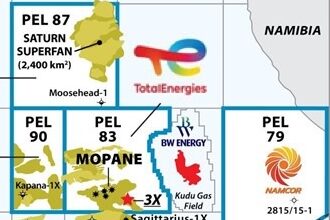No quick recovery in the cards for 2018

Most forecasts call for oil prices to stay within the $45-$55 range next year as global oil production stays high despite OPEC’s agreed cuts
By Linda Hsieh, Managing Editor
- Not much progress has been made in curtailing global oil production. In 2018, US crude oil production is forecast to pass the previous record set in 1970. OPEC crude production has only dipped by 200,000 bbl/day, despite pledges to cut 1.8 million bbl/day out of the global supply.
- Recent increases in oil consumption in the US and Europe, along with expected increases from China and India, are adding to expectations for global demand growth.
- In the near term, onshore drilling will remain stronger than offshore, which is still moving through the bottom of the cycle.
For the drilling sector specifically, North American land drillers, who have already made a strong comeback this year, will likely see more modest growth next year. Offshore drillers, who are still awaiting their turn at a recovery, will likely have to keep waiting. While there are signs that the offshore market has bottomed out, meaningful upward movement of rig dayrates remains a struggle. While offshore rig utilization rates between 75% and 85% are needed in order for dayrates to move off of their current lows, such utilization levels are not likely to happen before 2020, said Oddmund Føre, Senior Analyst Oilfield Service Research at Rystad Energy. “It could happen in the next decade, but then we would most likely need to see more rig retirements,” he said, suggesting that an additional 100 floaters and 150 jackups must be scrapped.
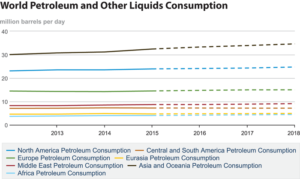
In terms of well activity, Spears and Associates is forecasting that 33,000 total new wells will be drilled in North America next year, compared with 30,000 this year. In China and Russia, the number of new wells in 2018 will stay flat at 16,000 and 7,500, respectively. For the rest of the world, a slight increase from 9,500 to 9,600 new wells is expected.
“US oil production will grow about a half-million bbl/day or more next year,” said John Spears, President of Spears and Associates. “That would be a third of the increase in global oil consumption, so we’ll be supplying a big part of the net increase in consumption.” In line with this outlook, Mr Spears forecasts that the biggest increase in drilling and completion spending next year will take place in North America – rising from $124 billion this year to $140 billion in 2018. “It’s a combination of both a higher level of activity and higher costs per well, which we’ve already seen this year and will carry over into next year,” he explained.
As part of efforts to address continuing cost challenges, more and more US operators are moving toward vertical integration, Mr Spears added. This means that oil and gas companies are taking on increasing responsibilities for the supply of materials and services to their own well sites, rather than awarding the work to service companies. They’re also getting creative in terms of securing financing for drilling programs. In particular, US operators have been teaming with external investors under agreements that give the investors stakes in specific wellbores in return for a defined minimum rate of return.
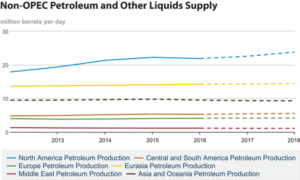
“Once that point is reached, most of the working interest reverts back to the operator,” Mr Spears stated. “These wellbore participation agreements offer a way for the outside investors to put capital to work in the US shale gas and tight oil sectors with less risk than if they were to back an E&P management team in the hopes of a buy-out in three to five years.”
Examples of such agreements include EOG Resources, with $400 million for wells in Ellis County, Oklahoma; Eclipse Resources, with $325 million for wells in the Utica Shale in southeastern Ohio; Sandridge Energy, with $200 million for wells in the STACK play; EP Energy, with $140 million for wells in the Altamont field in the Uintah Basin; and Endeavor Energy Resources, with $300 million for wells in the Midland Basin. “It’s sort of a new financing source that some US operators are making use of as a way to develop their fields,” Mr Spears said. “I’ll be very curious if we see more of this occurring next year and if it will become a regular part of the US market.”
The global supply picture
Non-OPEC
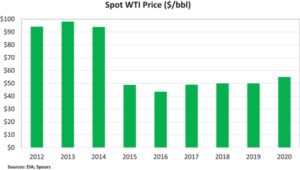
According to the US Energy Information Administration (EIA), US liquids production, including crude oil and natural gas liquids (NGLs), will grow by 1.2 million bbl/day in 2018. “A lot of that is coming from the Permian Basin,” said Timothy Hess, EIA Product Manager for Short Term Energy Outlook. “Producers there can really increase production at right around $50, so that’s the bulk of what’s driving the US.” The production growth is split fairly evenly between crude oil and NGLs, he said.
Elsewhere in North America, the EIA estimates that Canada will grow production at approximately 170,000 bbl/day in 2017 and 160,000 bbl/day in 2018. In Mexico, the effects of the country’s energy reforms will not kick in this year, so a significant production decline of approximately 180,000 bbl/day is still expected. However, Mexico’s decline is likely to slow next year to about 30,000 bbl/day. In July, Texas-based Talos Energy and Italy’s Eni each announced discoveries in Mexico’s shallow waters. Zama-1, operated by Talos, was the first offshore exploration well drilled by the private sector in Mexico’s history. The initial oil in-place volumes are estimated at between 1.4 billion to 2.0 billion barrels. Eni’s Amoca-3 well, in Campeche Bay, boosts the resource estimate of the Amoca field to 1 billion barrels of oil equivalent in place.

Two other notable sources of non-OPEC production are Brazil and the Caspian. In Brazil, proposed changes to the country’s local content rules, as well as the opening of pre-salt resources to foreign operators, are expected to positively impact production in the near future, said Lejla Villar, EIA Industry Economist. “Petrobras has been able to overcome significant challenges quite successfully, so we forecast a pretty healthy growth this year and next,” she said. “The 2018 forecast is about 120,000 bbl/day of year-to-year growth but could be higher, depending on how quickly they’re able to implement the proposed changes.”
In the Caspian region, the supergiant Kashagan field in Kazakhstan finally came onstream last year after more than a decade of development and years of delays. “Kazakhstan had initially agreed to cut production with OPEC,” Ms Villar said. “It will be interesting to see if they can get some concessions from OPEC so they can keep growing Kashagan’s output so that the operators there can finally get a return on their investments.” Companies with stakes in the field include North Caspian Operating Co, Eni, Shell, Total and ExxonMobil.
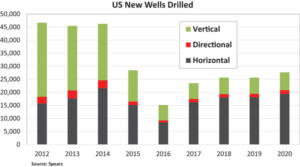
Elsewhere in the world, production from Russia is expected to decline by about 50,000 bbl/day in 2017 and remain relatively flat in 2018. Norway, the UK and India are all expected to remain flat, according to EIA numbers, while Chinese production is expected to fall by approximately 80,000 bbl/day in 2017 and 60,000 bbl/day in 2018.
OPEC
In December 2016, OPEC and several non-OPEC producers, including Russia, agreed to cut production by 1.8 million bbl/day for six months, beginning in January. This agreement was then extended in May to March 2018. In reality, however, OPEC crude oil production dipped by only about 200,000 bbl/day this year and is actually forecast by the EIA to increase by approximately 490,000 bbl/day in 2018.
Part of this can be attributed to increased production by OPEC nations that were exempt from the agreed cuts – Iran, Libya and Nigeria. Iranian production had quickly ramped up throughout 2016 to 3.8 million bbl/day after sanctions were lifted; this was already expected. However, any growth beyond 3.8 million will require significant investment by international oil companies, Ms Villar said. “I’m seeing interest, but I’m not seeing large-scale commitments to the Iranian upstream to make me believe that 4.5 million bbl/day within the next year or two is possible.”
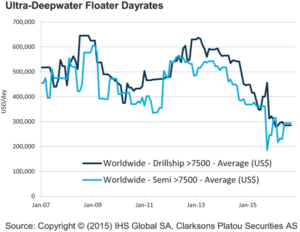
Libya, on the other hand, is harder to forecast, she said. The country has already pushed its production up significantly over the past year, going from approximately 290,000 bbl/day in Q3 2016 to nearly 1 million bbl/day in Q3 2017. “In July, their production averaged over 1 million for the month, but then two weeks later, valves were closed and pipelines were occupied and foreign workers were threatened. All of a sudden we saw production tanking by 260,000 bbl/day,” Ms Villar explained. “If they could get all the tribal militias to cooperate and go along with the national strategy of maximizing production and export revenues, they could probably get to 1.2 million bbl/day within one year. The problem is getting the political situation stabilized enough to actually get there and stay there.”
Nigerian production has also climbed steadily, from 1.27 million bbl/day in Q3 2016 to 1.68 million bbl/day in Q3 2017. “I’m expecting disruptions are going to quiet down a little bit in Nigeria,” Ms Villar said. “Vice President Yemi Osinbajo has really been able to reach out to the communities in the Delta region and bring about more of a peaceful situation. How long that will last is uncertain… but there is potential to push production back up.”
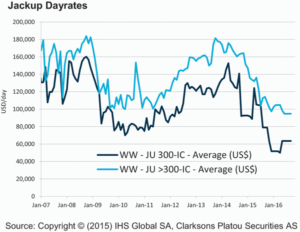
OPEC next meets in Vienna on 30 November, and it’s widely expected that the group will extend its production cuts in one form or another. “OPEC cuts, along with Russia, are contributing to stabilization of the oil price at $50 to $55/bbl,” Chirag Rathi, Director of Consulting for Frost & Sullivan, said. However, if production from non-OPEC countries continues to grow and outstrips any cuts made by OPEC countries, “then the price could fall much lower, to $30 to $35/bbl.” US crude oil production, for example, is already being forecast by the EIA to reach 9.9 million bbl/day in 2018, surpassing the previous high of 9.6 million bbl/day set in 1970.
For OPEC supply, there is not a lot of room for flexibility, Mr Rathi said, noting that Saudi production is already down to approximately 10 million bbl/day. “We don’t believe that Saudi has any willingness to cut beyond 9 million bbl/day because they would become kind of an insignificant player in the oil establishment,” he said. That’s a risk they’re not willing to take, especially with the country preparing for the Saudi Aramco IPO. “The stability of the riyal is also in question,” he warned. “If push comes to shove, Saudi will just let the market fall, and if the market falls, it will fall to about $30 to $35 per barrel.”
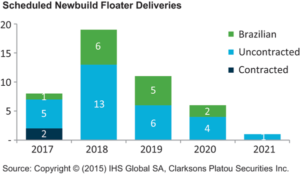
The X factor in this equation is global energy demand, Mr Rathi said. “Demand is more important than supply at this stage. If demand does not pick up by 1.5 million bbl/day in the coming years, that will have a huge impact on oil prices.”
The global energy demand picture
The EIA’s short-term outlook shows that total global consumption of liquid fuels will grow to 98.31 million bbl/day this year compared with 96.96 million bbl/day in 2016. In 2018, the EIA expects consumption to grow to 99.89 million bbl/day.
Although growth in oil consumption has been driven almost entirely by developing nations over the past 15 years, some developed nations are coming back into the fray, according to Mr Spears with Spears and Associates. “In the short term, we’re beginning to see industrialized economies report increases in oil consumption. It’s not an outstanding increase – maybe half a percent to 1% per year. But for the past decade the growth number had been zero, so it’s a bit of a surprise to see this,” he said.
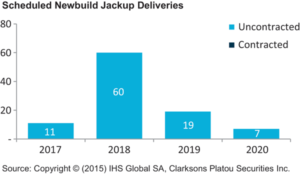
The US is leading growth among industrialized nations, at between 1% and 2% this year, Mr Spears added, citing decent economic growth, high employment and increased demand from the petrochemicals sector as major factors. Even in Europe, which has generally been declining for most of the past decade, “we’re looking at growth rates that are somewhere between half of a percent and 1% per year for both this year and next year.”
Among developing nations, the top two oil consumers remain China, which is growing at 2.5% to 3% per year, and India, growing at around 5%. “The situation in India is that they’re about where China was 20 or 25 years ago, so early stages of industrializing and urbanizing their economy,” Mr Spears said, adding that a pro-business government is also contributing to a ramp-up in overall growth.
When it comes to weak spots in global energy demand, Mr Rathi pointed to diesel. “It’s not growing as fast as people had believed it would because of global restrictions as far as trade is concerned. There are also a lot of efficiencies coming in with logistics and transportation. A lot of waste that used to happen with diesel has started to reduce quite a bit.”

Another weak spot is oil demand in the power generation sector. In fact, the role of oil “is negligible now in the US power generation sector. Outside the US, there are very few countries that actually use oil to power their power generation,” Mr Rathi continued. In the US market, natural gas has already become the fuel of choice. In Europe, the impact of renewables is growing fast, especially as countries like Spain invest heavily in data analytic technologies to improve demand and supply management of renewable energies.
“Elsewhere in the world, gas has not made the impact that it was supposed to in the power generation front,” Mr Rathi said. India and China, two countries that had been anticipated to become big consumers of LNG and natural gas, are instead relying more on coal, as well as nuclear and renewables. This, coupled with low oil prices in the rest of the world, has made US LNG non-competitive, he said, and big investments on LNG capacity are already disappointing investors.
In the longer term, the growth of electric vehicles (EV) will also start to negatively impact oil demand, particularly as EV engines improve and as “sharing” economies continue to be adopted at unprecedented rates, even in the developing world, Mr Rathi said. “You might not have a full-scale retreat from oil in the transportation sector, but the growth rate will be severely cut back as electric vehicles and hybrids play more of a role.” Frost & Sullivan predicts that there could be 9 million to 12 million EVs worldwide by 2020, up from an estimated 1.2 million in 2015.
Another good year for US shale
While the consensus forecast for oil prices in 2018 is around an average of $50, Marshall Adkins, Managing Director of Energy Research at Raymond James, thinks differently. “I am extremely bullish, which is a very contrarian view. But we think supply and demand are significantly underbalanced, and oil prices need to move meaningfully higher over the next year for the industry to grow production as much as we need it to grow to rebalance the system,” he said, noting that he believes WTI prices will reach $65 next year.
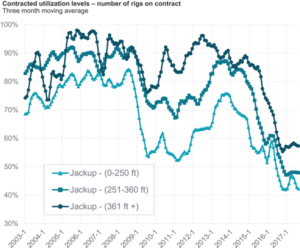
Strong increases in global oil demand for the past several years are an indicator. Another indicator is the recent drop in US inventories of gasoline, distillate and crude oil. “They’re falling about 680,000 bbl/day in the US alone,” Mr Adkins said. “Inventories have been collapsing for six months. It tells us the market is meaningfully undersupplied and will remain undersupplied until you get a price response.”
The biggest beneficiary of $65 oil would be, again, the US land drillers. In fact, he said, mid-$60 oil would allow the US rig count to grow by almost 30% next year. “We’ll probably average 1,100 rigs versus the 850 we’ll likely average this year,” he said.
At $65 oil, however, natural gas prices are likely to slide down to $2.75 per million BTU, down from the low $3’s this year. “If we’re right on oil prices being $65 and the rig count moves up, then we’re going to produce a lot more associated gas… It’s a 10% drop. It won’t put anyone out of business, but it does make things a little tighter.”
Offshore still waiting in the wings
Compared with the US land market, offshore drillers are facing much stiffer headwinds heading into 2018. Rystad Energy estimates that the total utilization rate for MODUs currently sits at just over 50%. For floaters specifically, the total utilization rate this year is averaging at 44%, down from 52% last year. On the jackup side, the 2016 and 2017 numbers are 58% and 55%, respectively.
Active rig utilization rates, from Clarksons Platou, look slightly better, at 65% for both floaters and jackups.
Both firms agree that the offshore drilling market is moving through the bottom of the cycle, and among the brightest signs of a possible recovery is the fact that the pace of rig contracting has picked up notably this year. “We have seen a very notable uptick in fixing activity, for jackup rigs in particular, meaning that we’re starting to see some kind of recovery in the shallow-water territory,” said Erik Tonne, Managing Director and Market Analyst at Clarksons. The number of jackup rig years fixed in 2016 was 111, while Clarksons estimates there will be approximately 200 jackup rig years fixed for 2017 by year-end.
On the floater side, too, “we have seen more floater rigs fixed than we have in the corresponding time last year and in 2015,” Mr Tonne said. The number of floater rig years fixed for 2015, 2016 and 2017 are 39, 47 and 60, respectively. However, it should be noted that net demand in 2015 and 2016 would be around zero if contract cancellations were factored in; that’s not the case for 2017, as cancellations have become far less common.
Two other signs of recovery that have been observed are increasing seismic late sales, which typically indicate potential increasing exploration activity, and more awards of Christmas trees for the subsea segment – approximately 80 so far this year. “So there are some positive signs,” Mr Tonne said. “So far it’s fairly incremental, not a massive and rapid rebound.”
Mr Fore with Rystad Energy noted that although the number of contracts awarded has increased, the duration of these contracts have not. Only 16% of floater contracts signed this year have been one year or longer. For jackups, that number is 25%.
Exceptions to this trend include the Noble Bob Douglas drillship, which landed a three-year contract with ExxonMobil for drilling in Guyana starting in Q1 or Q2 of 2018. North Atlantic Drilling, a majority-owned subsidiary of Seadrill, also secured 10-year contracts for the West Elara and West Linus jackups to work for ConocoPhillips Skandinavia in the Greater Ekofisk Area. In Southeast Asia, Brunei Shell Petroleum awarded a contract for Aban Offshore’s Deep Driller 5 jackup for a firm period of five years, followed by three optional periods of one year each.
Looking at contract awards by region, Rystad’s data shows that the North Sea leads in contracting activity for floaters, with 31% of year-to-date contract awards. “In our view, looking to the North Sea, Statoil is going to remain fairly stable in terms of their contracted rig capacity,” Mr Tonne said. “At the same time, we’re seeing requirements out in the market from AkerBP, from Lundin Petroleum and from ConocoPhillips. All of these are looking for rig capacity either in 2018 or 2019, and quite a bit of what we’re seeing is for potential development, so we think some of this will materialize.”
For jackups, Southeast Asia is leading all regions of the world, with 32% of year-to-date contract awards, according to Rystad.
“Petronas is ramping up,” said Morten Haugan, Managing Director of Offshore Rigs for Clarksons Platou Asia. “We are getting indications that they are looking to have eight to 10 rigs working for them again moving forward, coming up from three to four rigs working for them for the past year. Certainly there is an uptick in demand.”
Such spots of higher demand, however, won’t be enough to pull the offshore drilling industry out of the gutter. The most important thing that drilling contractors can do to improve their market is still the one thing that they hate to do the most: scrap assets with potential useful life. “As an industry overall, I think they should continue to scrap more rigs,” Mr Tonne said. “You’re not going to see some kind of coordinated approach across the industry, but I think if all of them have done so, it would clearly be a positive for the market.” DC
DC Editorial Coordinator Eva Vigh contributed to this article.






